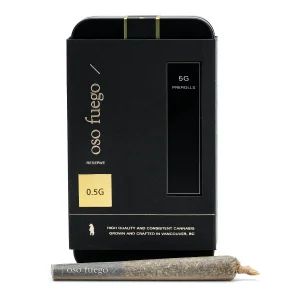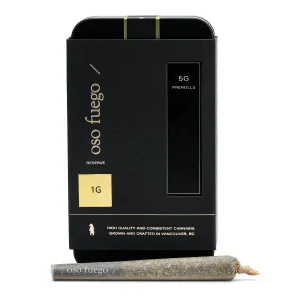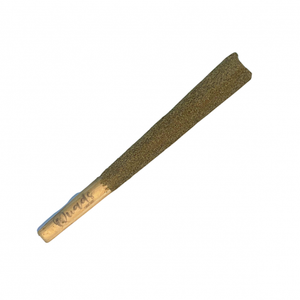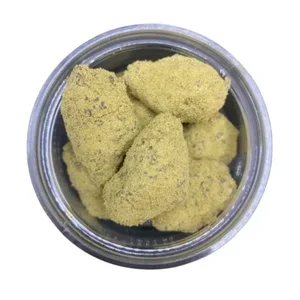Table of Contents
- Understanding Fibromyalgia
- The Role of Cannabis in Fibromyalgia Relief
- Factors to Consider When Choosing Cannabis Strains
- Best Cannabis Strains for Fibromyalgia Relief
- Conclusion
- FAQs
Discover the best cannabis for fibromyalgia and reclaim control over your symptoms and overall well-being. Get ready for a journey of relief and empowerment as we unveil the top strains that can deal with your symptoms and improve your quality of life. From the renowned Blue Dream to the pain-relieving Cannatonic, we’ve shortlisted some of the most effective cannabis strains that can alleviate fibromyalgia symptoms in this comprehensive guide. So without further ado, let’s dive in.
Understanding Fibromyalgia
Fibromyalgia is a complex disorder that affects the central nervous system, causing widespread pain and heightened sensitivity to touch. Individuals with fibromyalgia often experience a range of symptoms, including chronic pain, fatigue, sleep disturbances, cognitive difficulties, and mood disturbances. These symptoms can significantly impact daily life and diminish the overall quality of life for those affected.
Traditional treatment options for fibromyalgia include pain medications, physical therapy, and lifestyle modifications. However, these approaches may not provide sufficient relief for everyone, leading individuals to explore alternative options like cannabis.
The Role of Cannabis in Fibromyalgia Relief
To understand how cannabis may alleviate fibromyalgia symptoms, it’s essential to explore the body’s endocannabinoid system (ECS). The ECS plays a crucial role in regulating various physiological processes, including pain perception, immune function, and mood. Cannabis contains compounds known as cannabinoids, such as CBD (cannabidiol) and THC (tetrahydrocannabinol), which interact with the ECS receptors.
Preliminary research suggests that cannabinoids found in cannabis may help modulate pain signals, reduce inflammation, and promote relaxation. CBD, in particular, is known for its potential analgesic and anti-inflammatory properties, while THC may aid in pain relief and induce relaxation. However, it’s important to note that the effects of cannabis can vary depending on the strain and individual response.
Scientific studies exploring the use of cannabis for fibromyalgia are still limited, but early findings indicate promising results. Some studies have shown that cannabis use may reduce pain intensity, improve sleep quality, and alleviate other fibromyalgia symptoms. However, more research is needed to fully understand the potential benefits, optimal dosages, and long-term effects of cannabis for fibromyalgia.
It is important to highlight the limitations and gaps in the current research on cannabis for fibromyalgia. The lack of standardized studies, variations in cannabis strains and dosages, and individual differences in response make it challenging to draw definitive conclusions. Consequently, further investigation is necessary to provide a comprehensive understanding of the efficacy and safety of cannabis as a treatment option for fibromyalgia.
Factors to Consider When Choosing Cannabis Strains
When exploring cannabis strains for fibromyalgia relief, there are several factors to consider. Understanding the different types of strains, the balance between CBD and THC, the role of terpenes, and individual preferences and tolerance levels can help in selecting the most suitable option.
Types of Cannabis Strains: Indica, Sativa, and Hybrid
Cannabis strains are typically categorized as Indica, Sativa, or Hybrid. Each type has distinct characteristics and effects on the body.
- Indica strains are known for their relaxing and sedating properties. They often provide a deep body high and may help with pain relief, muscle relaxation, and sleep promotion. Indica strains are commonly recommended for individuals experiencing chronic pain and insomnia associated with fibromyalgia.
- Sativa strains, on the other hand, tend to be more energizing and uplifting. They can enhance focus, creativity, and sociability. Sativa strains may be beneficial for individuals dealing with fatigue, cognitive difficulties, and low mood often associated with fibromyalgia.
- Hybrid strains are a combination of Indica and Sativa genetics. They offer a balance between relaxation and energy, and their effects may vary depending on the specific strain’s genetic profile. Hybrid strains can be a good option for individuals seeking a more tailored experience based on their unique symptoms and needs.
-
-
-
-
Frost Factory – Moonrocks (14g)
$156.0014g premium nugs rolled in sauce and dusted with kief. Sealed tuna can style for maximum freshness and terpene preservation. -
Frost Factory – Cold Cured Premium Pre-Rolls
$70.006 x 1-gram pre-rolled joints made with Frost Factory premium buds.
CBD-Dominant vs. THC-Dominant Strains
Cannabis strains can also be categorized based on their dominant cannabinoid profile. CBD-dominant strains contain higher levels of CBD and minimal THC, offering potential therapeutic benefits without inducing a significant psychoactive effect. These strains are often preferred by individuals who want to avoid the intoxicating effects of THC while still harnessing the potential pain-relieving and anti-inflammatory properties of CBD.
On the other hand, THC-dominant strains have higher levels of THC, the psychoactive compound in cannabis. These strains may provide more potent pain relief, relaxation, and mood enhancement. However, it’s important to note that THC can cause psychoactive effects, which may not be desirable for everyone. Individuals considering THC-dominant strains should start with low doses and gradually increase them to find the optimal balance between symptom relief and comfort.
Terpenes and Their Therapeutic Effects
Terpenes are aromatic compounds found in cannabis that contribute to its distinctive flavours and aromas. They also play a role in the potential therapeutic effects of different strains. Some terpenes, such as myrcene and limonene, have been associated with analgesic and anti-inflammatory properties. Others, like linalool and beta-caryophyllene, may promote relaxation and help manage anxiety or stress.
Considering the potential effects of terpenes on fibromyalgia symptoms can be beneficial when choosing cannabis strains. For example, if pain relief is a primary concern, strains high in myrcene and beta-caryophyllene might be worth exploring. Similarly, individuals experiencing sleep disturbances could consider strains with higher levels of linalool, known for its calming and sedative properties.
Individual Preferences and Tolerance Levels
Lastly, individual preferences and tolerance levels should guide the selection of cannabis strains. Factors such as personal taste, desired effects, and sensitivity to THC or CBD can vary significantly. Some individuals may prefer a subtle and functional high, while others may seek a more intense relaxation experience. It’s crucial to start with low doses and gradually increase as needed, paying attention to how different strains affect your symptoms and overall well-being.
Consulting with a knowledgeable healthcare professional or a qualified budtender at a reputable dispensary can provide valuable guidance and help navigate the vast array of cannabis strains available. They can provide insights based on their expertise and knowledge of specific strains that have been reported to be beneficial for fibromyalgia symptoms.
Additionally, it’s important to consider any potential interactions with other medications or treatments you may be undergoing. Always inform your healthcare provider about your intention to incorporate cannabis into your fibromyalgia management plan to ensure it aligns with your overall treatment approach.
Taking all these factors into account, finding the right cannabis strain for fibromyalgia requires a personalized approach. What works for one person may not work for another, so it’s essential to experiment and explore different strains to discover what suits you best.
Best Cannabis Strains for Fibromyalgia Relief
Living with fibromyalgia can be challenging, but cannabis strains have shown promise in providing relief for its symptoms. Here are some of the best cannabis strains that individuals with fibromyalgia have reported finding beneficial.
1. Blue Dream: The Relaxing Euphoria
Description: Blue Dream is a popular hybrid strain known for its balanced effects. It combines the calming properties of an Indica strain with the uplifting qualities of a Sativa. This strain typically has a moderate THC level and a notable CBD content.
Benefits: Blue Dream has gained recognition for its potential to induce relaxation, improve mood, and provide pain relief. Users have reported experiencing a gentle body high accompanied by a sense of euphoria and mental clarity. The strain’s combination of THC and CBD may contribute to its effectiveness in managing fibromyalgia symptoms.
User Testimonials: Many individuals with fibromyalgia have found relief with Blue Dream. They have reported a reduction in pain levels, increased relaxation, and an overall improvement in their well-being. While anecdotal, these testimonials suggest that Blue Dream may be a valuable strain for fibromyalgia symptom management.
2. Harlequin: Finding Balance and Pain Relief
Description: Harlequin is a Sativa-dominant strain known for its unique CBD-to-THC ratio. It typically has higher CBD levels and lower THC content, making it a popular choice for those seeking pain relief without significant psychoactive effects.
Benefits: Harlequin’s balanced cannabinoid profile offers potential benefits for pain relief and relaxation. The higher CBD content helps alleviate pain and reduce inflammation, while the lower THC levels minimize psychoactive effects. This strain may provide individuals with fibromyalgia the relief they need without unwanted side effects.
User Testimonials: Individuals living with fibromyalgia have reported positive experiences with Harlequin. They have shared stories of reduced pain levels, improved sleep, and enhanced mood. These accounts align with the strain’s reputation for providing balanced relief and highlight its potential as a valuable tool in fibromyalgia management.
3. ACDC: Calming the Body and Mind
Description: ACDC is a highly regarded CBD-dominant strain known for its gentle and calming effects. It typically contains high levels of CBD and minimal THC, offering potential therapeutic benefits without inducing a significant psychoactive effect.
Benefits: ACDC’s high CBD content and low THC levels make it a popular choice for individuals seeking relaxation and anxiety reduction. It may help soothe both the body and mind, providing relief from fibromyalgia-related pain and emotional distress. ACDC is often praised for its gentle nature, making it an appealing option for those new to cannabis or sensitive to its effects.
User Testimonials: Many individuals with fibromyalgia have shared their positive experiences with ACDC. They have reported reduced pain, improved sleep quality, and decreased anxiety levels. These testimonials, coupled with ACDC’s reputation as a calming strain, indicate its potential efficacy in managing fibromyalgia symptoms.
4. Cannatonic: Soothing the Pain
Description: Cannatonic is a renowned strain known for its high CBD content and potential analgesic properties. It typically has a low THC level, making it suitable for individuals seeking pain relief without significant psychoactive effects.
Benefits: With its high CBD content, Cannatonic may offer notable pain-relieving properties for individuals with fibromyalgia. It has been reported to alleviate muscle pain, reduce inflammation, and promote relaxation. The strain’s balanced nature allows for symptom management without inducing intense psychoactive effects.
User Testimonials: Individuals living with fibromyalgia have shared their success stories with Cannatonic, expressing the strain’s effectiveness in soothing their fibromyalgia-related pain. Users have reported a reduction in muscle tension, improved sleep quality, and an overall decrease in pain levels. These testimonials highlight Cannatonic’s potential as a valuable option for those seeking relief from fibromyalgia symptoms.
5. White Widow: Energizing and Uplifting
Description: White Widow is a Sativa-dominant strain known for its energizing and mood-lifting effects. It typically has a higher THC content and moderate CBD levels.
Benefits: White Widow’s stimulating properties make it a popular choice for combating fibromyalgia-related fatigue and low mood. The strain may provide individuals with an uplifting and euphoric experience, promoting mental clarity and motivation. This energizing effect can help individuals manage their daily activities despite the challenges of fibromyalgia.
User Testimonials: Users with fibromyalgia have reported positive experiences with White Widow, describing increased energy levels, improved focus, and a brighter mood. They have found the strain to be helpful in combating fatigue and enhancing their overall well-being. These testimonials highlight the potential of White Widow as an option for managing the fatigue and low mood commonly associated with fibromyalgia.
Conclusion
In conclusion, cannabis strains like Blue Dream, Harlequin, ACDC, Cannatonic, and White Widow have emerged as potential allies in the battle against fibromyalgia. However, before embarking on this green adventure, it’s crucial to consult with knowledgeable healthcare professionals who can guide you through the maze of options and potential interactions. Remember, finding the perfect strain for fibromyalgia relief requires a dash of personal experimentation and a sprinkle of resilience. With the right strain in hand, you may uncover a secret weapon to help ease the burdens of fibromyalgia and embark on a journey towards improved well-being and a brighter future.
FAQs
Which cannabinoid is best for fibromyalgia?
When it comes to fibromyalgia, both CBD and THC have shown potential benefits. CBD is known for its anti-inflammatory and analgesic properties, which can help alleviate pain and reduce inflammation associated with fibromyalgia. THC, on the other hand, may provide pain relief and promote relaxation. The ideal cannabinoid for fibromyalgia may vary from person to person, so it’s important to explore different ratios and find what works best for your specific needs.
What type of cannabis is best for chronic pain?
For chronic pain management, strains with a balanced CBD-to-THC ratio or higher levels of CBD are often recommended. CBD-dominant strains or products tend to provide pain relief without the psychoactive effects commonly associated with THC. However, some individuals may find that THC-dominant strains offer better pain relief. It’s advisable to start with low doses and gradually increase as needed while closely monitoring the effects and consulting with a healthcare professional.
What type of CBD is best for fibromyalgia?
When choosing CBD for fibromyalgia, it’s essential to opt for high-quality, third-party-tested products. Full-spectrum CBD, which contains a range of cannabinoids, terpenes, and other beneficial compounds from the hemp plant, may offer enhanced benefits due to the entourage effect. However, broad-spectrum CBD or CBD isolate, which contains only CBD, can also be effective for fibromyalgia. The choice between the different types of CBD depends on individual preferences and sensitivity to THC.
Does cannabis oil help fibromyalgia?
Cannabis oil, particularly CBD-rich or balanced CBD-to-THC ratios, may help manage fibromyalgia symptoms. CBD has been reported to alleviate pain, reduce inflammation, improve sleep quality, and promote relaxation. THC in cannabis oil can also provide pain relief and induce a sense of calmness. However, it’s important to note that the effectiveness of cannabis oil for fibromyalgia varies among individuals, and it’s advisable to consult with a healthcare professional to determine the most suitable dosage and form of administration.
What herb is best for fibromyalgia?
While cannabis is commonly associated with fibromyalgia relief, there are other herbs and natural supplements that may complement its effects. Some individuals find herbs like turmeric, ginger, and Boswellia helpful for reducing inflammation and easing pain. Additionally, herbs like chamomile and valerian root can promote relaxation and improve sleep quality. It’s important to note that the efficacy of these herbs for fibromyalgia may vary, and it’s recommended to consult with a healthcare professional before incorporating them into your treatment plan.













